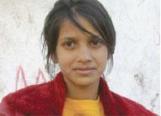The UNICEF's study "Breaking the Cycle of Exclusion: Roma Children in South East Europe", presented on the 16th of May 2007 in Belgrade, focuses on the 1.7 million Roma children living in South East Europe. According to the study, Roma children suffer from poverty, discrimination and a lack of prospects for their future in eight states of South East Europe: Albania, Bosnia Herzegovina, Bulgaria, Kosovo, FYR Macedonia, Montenegro, Romania and Serbia. (...)
Breaking the cycle of exclusion by fighting stereotypes, prejudices and discrimination is the main purpose of the awareness raising campaign "Dosta! Go beyond prejudice, discover the Roma." Initiated by the Council of Europe and the European Commission. The Dosta! campaign has two main objectives; the first is the recognition of Roma as fully fledged citizens of European countries, while the second focuses on the recognition of the contribution of the Roma culture to Roma cultural heritage.
Roma children in these countries are among the poorest and most excluded members of society. They lack access to adequate housing, health care, education and social services. A significant number are not registered at birth. Wide-spread discrimination and physical segregation keep Roma on the margins of society and help perpetuate the cycle of poverty and exclusion from one generation to the next.
Roma children face a number of obstacles including:
• Poverty: Between one quarter (27 per cent in Bosnia and Herzegovina) and almost two thirds (59 per cent in Kosovo) of Roma live in poverty and, in five of the eight countries/entities surveyed, more than 40 per cent of the Roma population are poor.
• Health: Two thirds of the Roma households have not enough to eat. Children are less frequently vaccinated and their families cannot afford medicine when they are ill. 20 per cent of the children are not healthy compared to seven percent of children from non-Roma families. Six times as many Roma children are underweight, compared to the average national figures in Serbia. In FRY Macedonia three times as many Roma as the national average are under weight.
• School attendance: Roma children are seriously disadvantaged as far as school attendance is concerned. If they are enrolled at all they usually go to “Roma schools” only which are ill equipped and lack qualified teachers. Roma children are very often referred to schools for children with special needs – the reasons for that appear specious.
• Level of education: A relatively high percentage of Roma children enter school. Unfortunately very few of them complete even primary education. In Serbia, only 13 per cent of Roma children complete primary education. Results from FYR Macedonia show that less than half of the 63 per cent of Roma children who enter primary school complete it. The data shows that the chances of Roma going on to secondary and higher education are much reduced in comparison to non-Roma children.
The whole report is to download from the page of UNICEF http://www.unicef.org/ceecis/media_6204.html



